Chocolate arrived in Palestine at the beginning of the 20th century. The first chocolate factory documented in the Archives is Noam. A factory established in Jaffa by Yitzhak Levinstein and Meir Shulman. Initially, they only produced sweets, but after the First World War, they also added chocolate and halva to their assortment. In 1928, Noam unsuccessfully merged with the Lieber Company, which had Levinstein and Shulman retire from the business a year later.
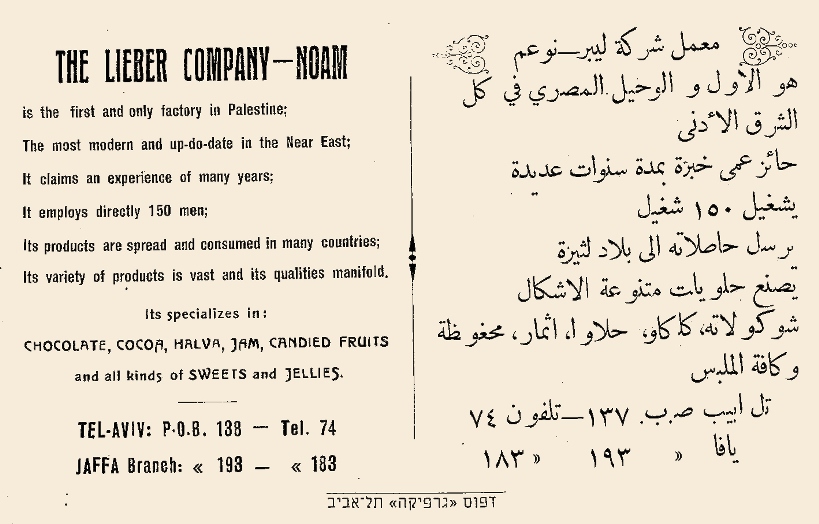 Advertisement for products of the Lieber-Noam Company after the merger in 1928. Declaring the factory as the most advanced in the Near East. (J33\14)
Advertisement for products of the Lieber-Noam Company after the merger in 1928. Declaring the factory as the most advanced in the Near East. (J33\14)
In the 1920's, another factory named Ra'anan opened in Jaffa, producing chocolate, cocoa, canned fruits, and candies. Israel Lieber, who immigrated to Palestine from Germany, purchased the Ra'anan factory in 1926 and changed its name to Lieber.
The Ra'anan logo on official stationery, from files of the Department for
Trade and Industry, 1922 (S8\1168)
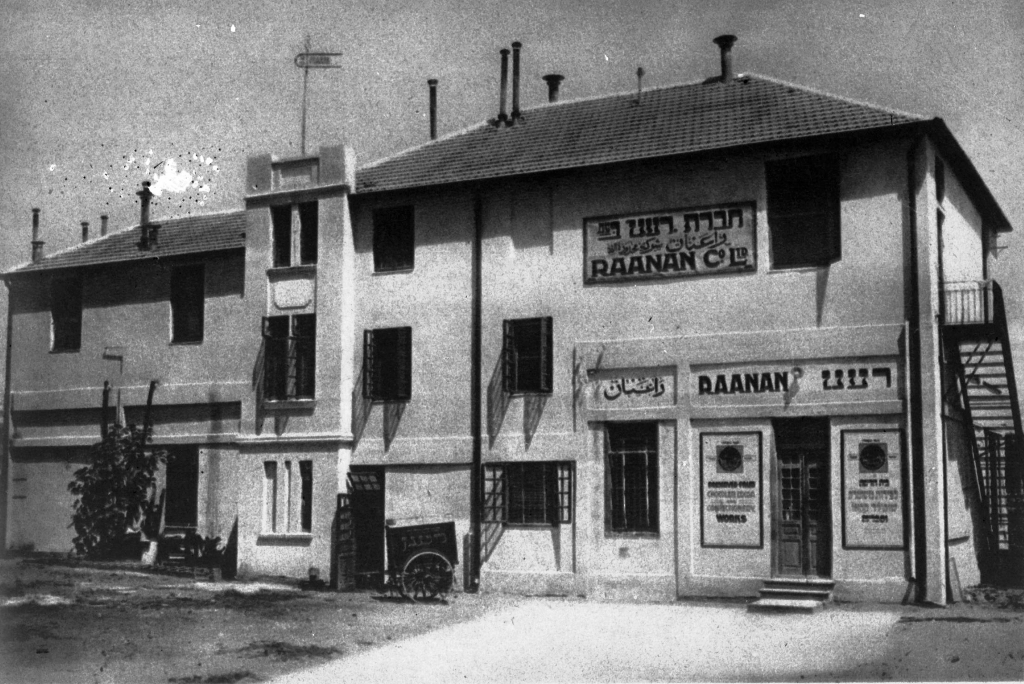
Ra'anan factory, 1920's (GNGEN\403221)
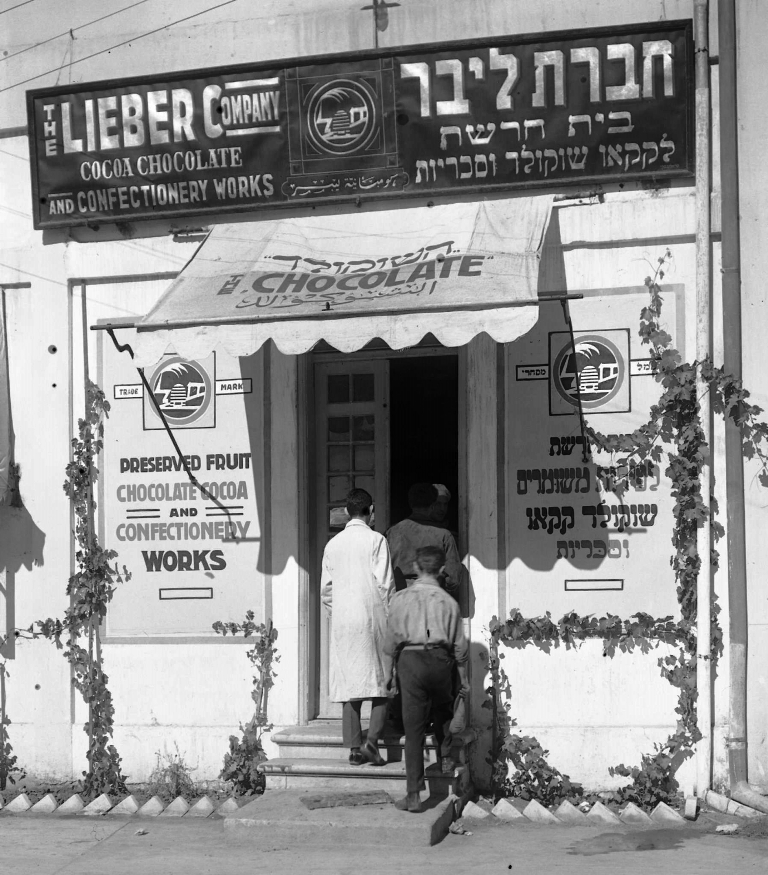
Lieber factory, 1927. Keren Hayesod collection, photographer: Zoltan Kluger (NKH\430169)
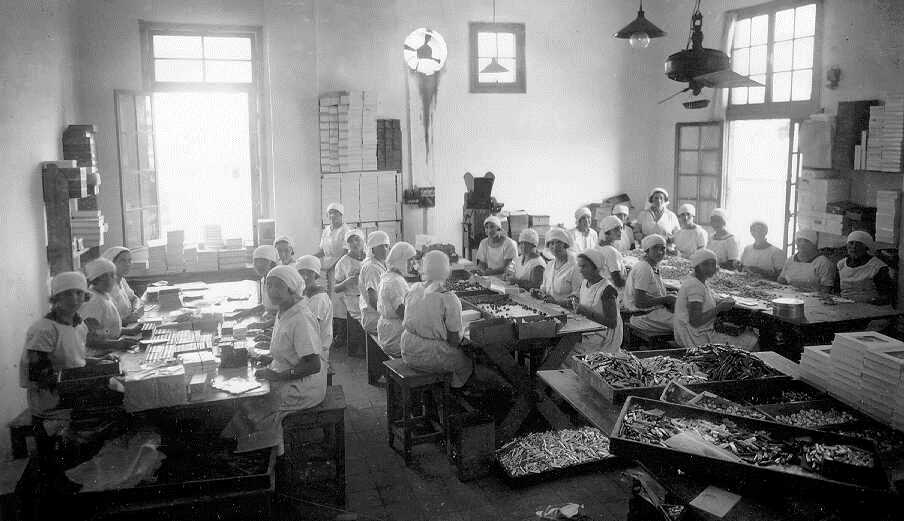
The packaging room of the Lieber factory, 1927. Keren Hayesod collection,
photographer: Zoltan Kluger (PHKH\1294963)
"The Face of the Generation" - Lieber card game featuring well-known figures in the history of Zionism: Menachem Ussishkin, Max Nordau and Lord Balfour, 1940's (DD1\ 3354)
In 1933, a new factory opened in Ramat-Gan: Elite, which turned out to be very important to the Israeli chocolate industry. Eliyahu Fromenchenko came to Palestine, from Latvia, in the wake of anti-Semitism and brought with him machines from his former chocolate and candy factory. With eight partners, he founded Elite. They produced chocolate, cocoa, candies, and became the official supplier of chocolate to the Allied units in Palestine during World War II.
Elite factory, Ramat Gan, 1934 (PHG\1030235)
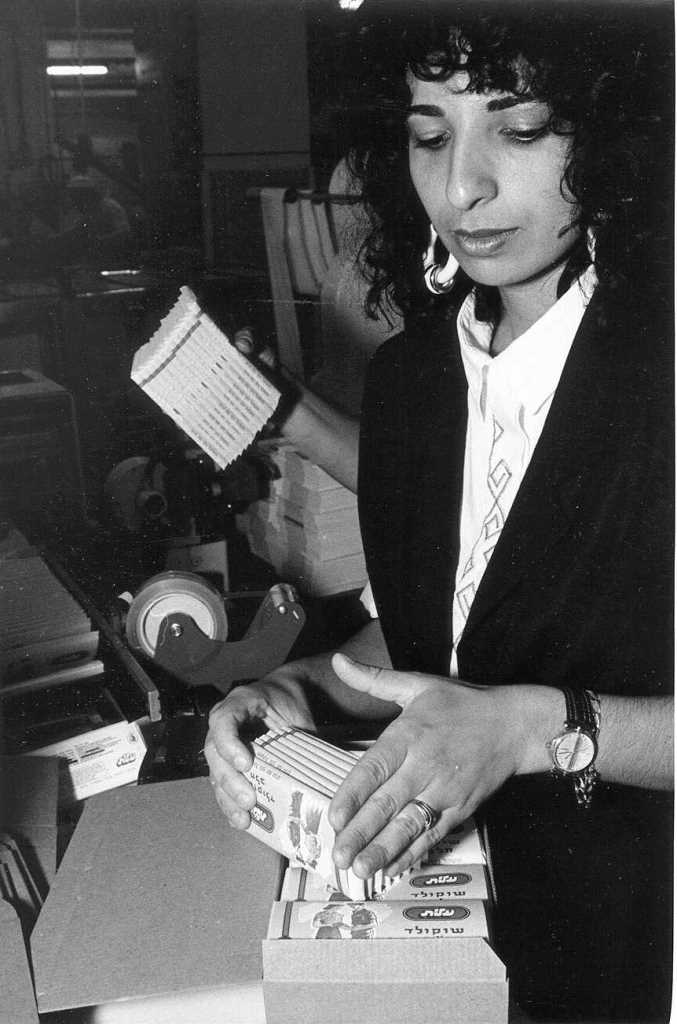
Packing Elite's chocolate in boxes, 1970's (PHIS\1454874)
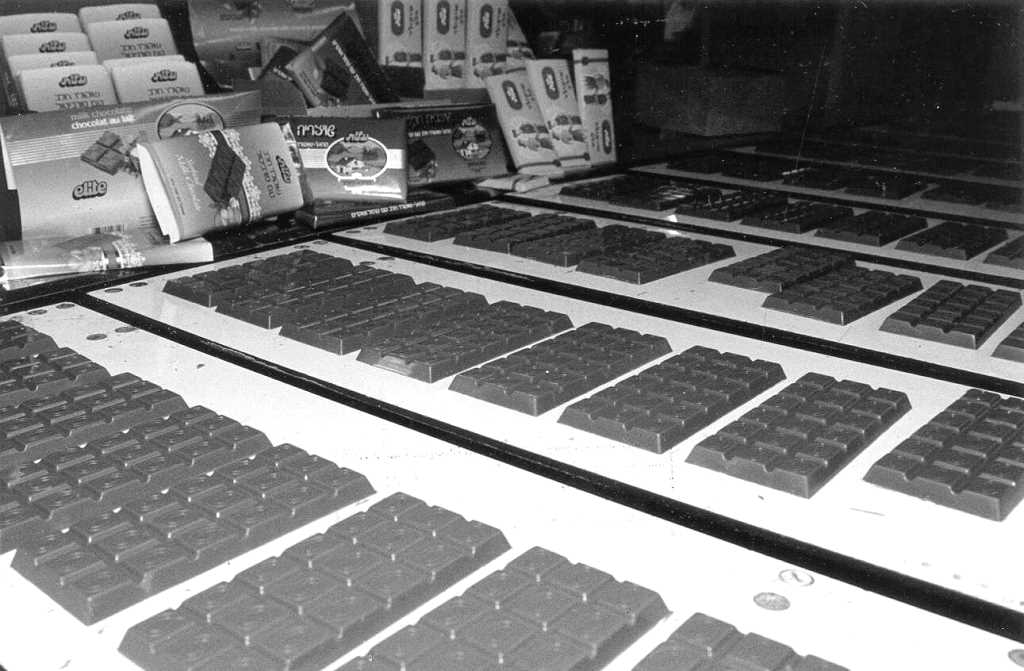 Production lines of Elite chocolate, 1970's (PHIS\1454873)
Production lines of Elite chocolate, 1970's (PHIS\1454873)
Another veteran factory operating in Ramat-Gan was CeDe - the initials of its founder; Celel Devilansky. In 1956, the factory was relocated to Nazareth Illit and subsequently acquired by Elite.
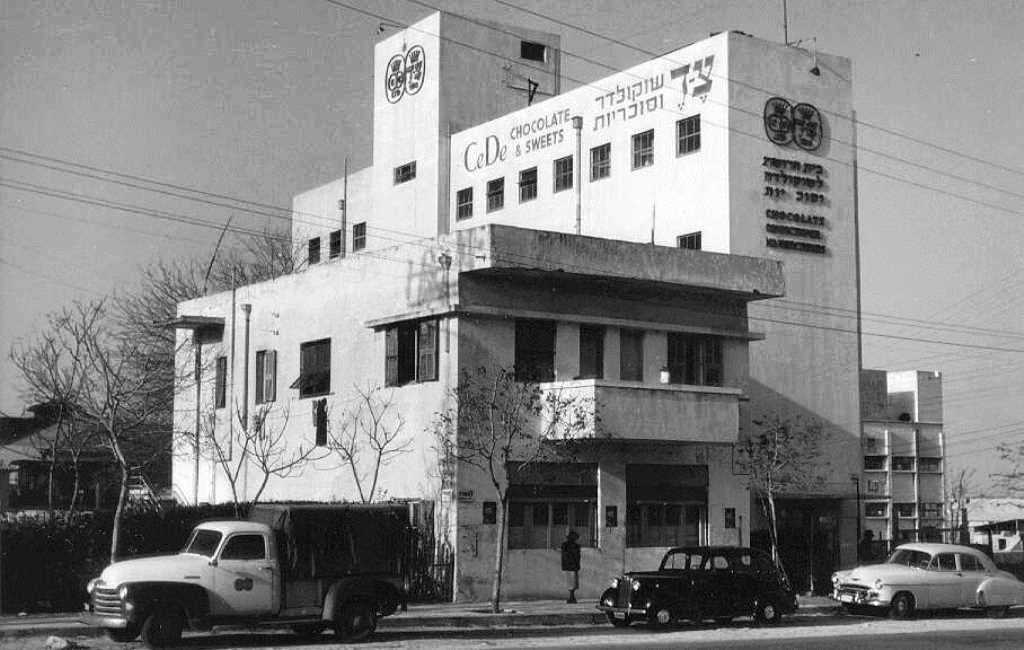
CeDe factory in Ramat-Gan, 1953 (PHG\1015687)
The introduction of the austerity regime, after the establishment of the state, severely damaged the chocolate industry. Only the production of basic chocolate was permitted and sales limited.
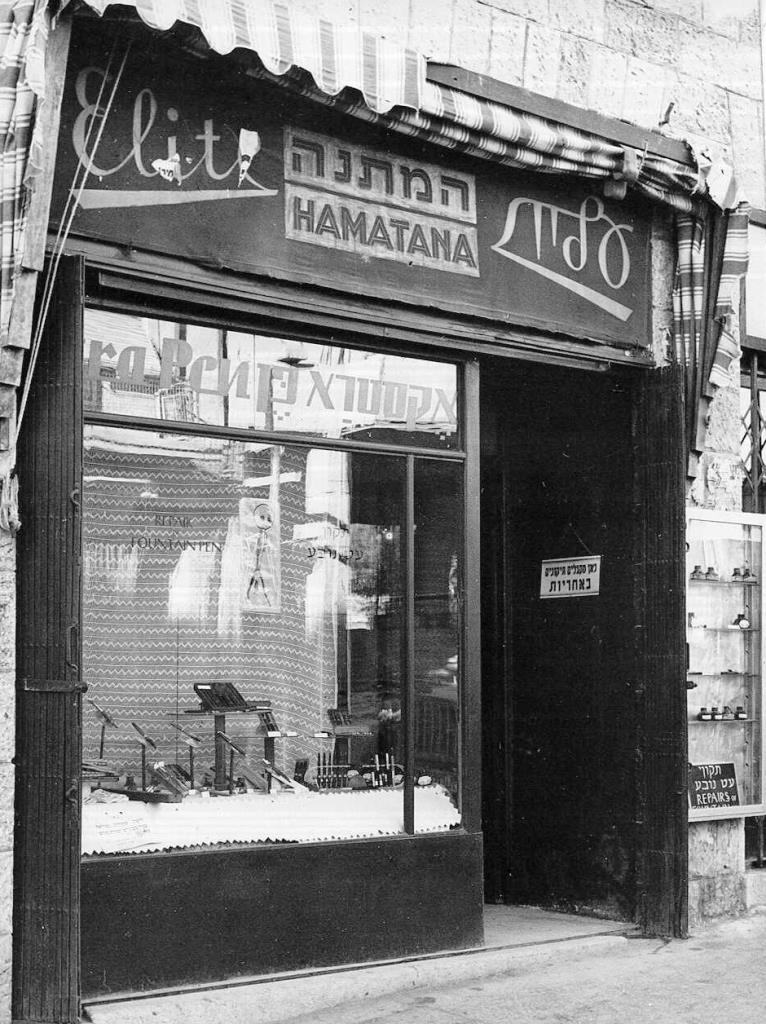
An Elite store in Jerusalem closed and converted to a pen repair shop during the austerity period, 1951. Photographer: Fritz Schlesinger (PHSC\1205702)
Elite controlled the chocolate market until 1986 when Vered Hagalil established its plant in Safed. Benjamin Gibli, who headed Koor's food division, decided to set up a chocolate factory and create competition within the industry. Vered Hagalil introduced new products and exposed the public to additional tastes.

Advertisement for Vered Hagalil chocolate, 1989. Design: Lily Sher (KRA\1847)
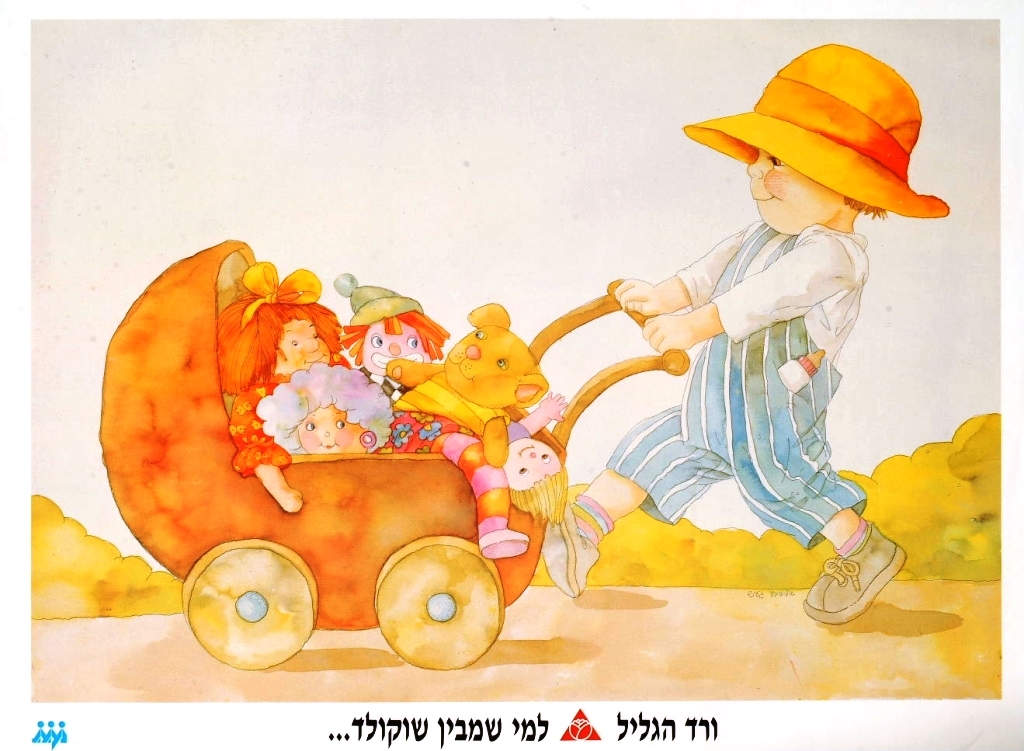 Advertisement for Vered Hagalil chocolate. Design: Elisheva Gaash (KRA\1848)
Advertisement for Vered Hagalil chocolate. Design: Elisheva Gaash (KRA\1848)